President Michelle Bachelet addressing those celebrating the groundbreaking event for the GMT on the windy evening of November 11th.
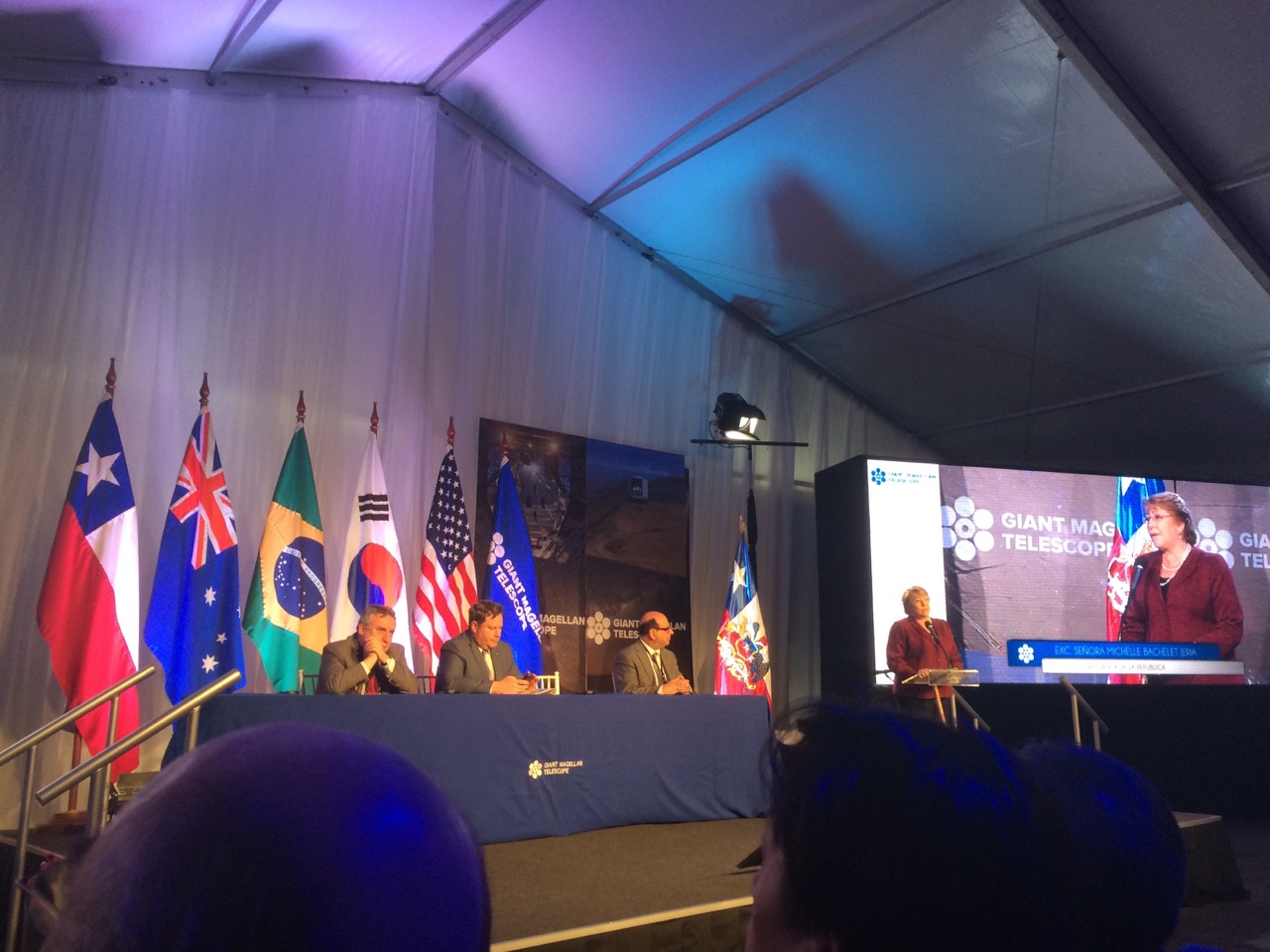
Home of MagAO and MagAO-X.
On November 11th, I had the great pleasure of attending the Groundbreaking Ceremony for the GMT. It was a very windy, cold, but happy occasion. I’ll be posting a more complete update in the next 24 hours, including hopefully some of the photos that I was able to take during the celebrations. The event was well attended, including wise and often humorous remarks by the ambassadors to Chile from Australia, South Korea, and the United States. The President of the Republic of Chile, Michelle Bachelet, was the keynote speaker. Everyone working to build GMTO (the GMTO staff, the many people from all of the partners involved, including the talented women and men of Steward Observatory and the Richard F. Caris Mirror Lab) should be very pleased to see the project reach this milestone.
Fortunately for the MAGAO team, the more than 150 people that were visiting the mountain yesterday have now left, leaving hopefully enough room for you to work and sleep during your upcoming long observing block!
I am happy to announce the acceptance of Magellan Adaptive Optics first-light observations of the exoplanet beta Pic b. Paper II by the Astrophysical Journal. This paper presents the 0.9-5 micron spectral energy distribution (SED) of young giant exoplanet beta Pic b. We carefully calibrated Clio (see the Appendix), analyzed our photometry, combined it with other works’ photometry, and measured the total brightness of the planet at all wavelengths — the bolometric luminosity. Here are the images of the star and planet:
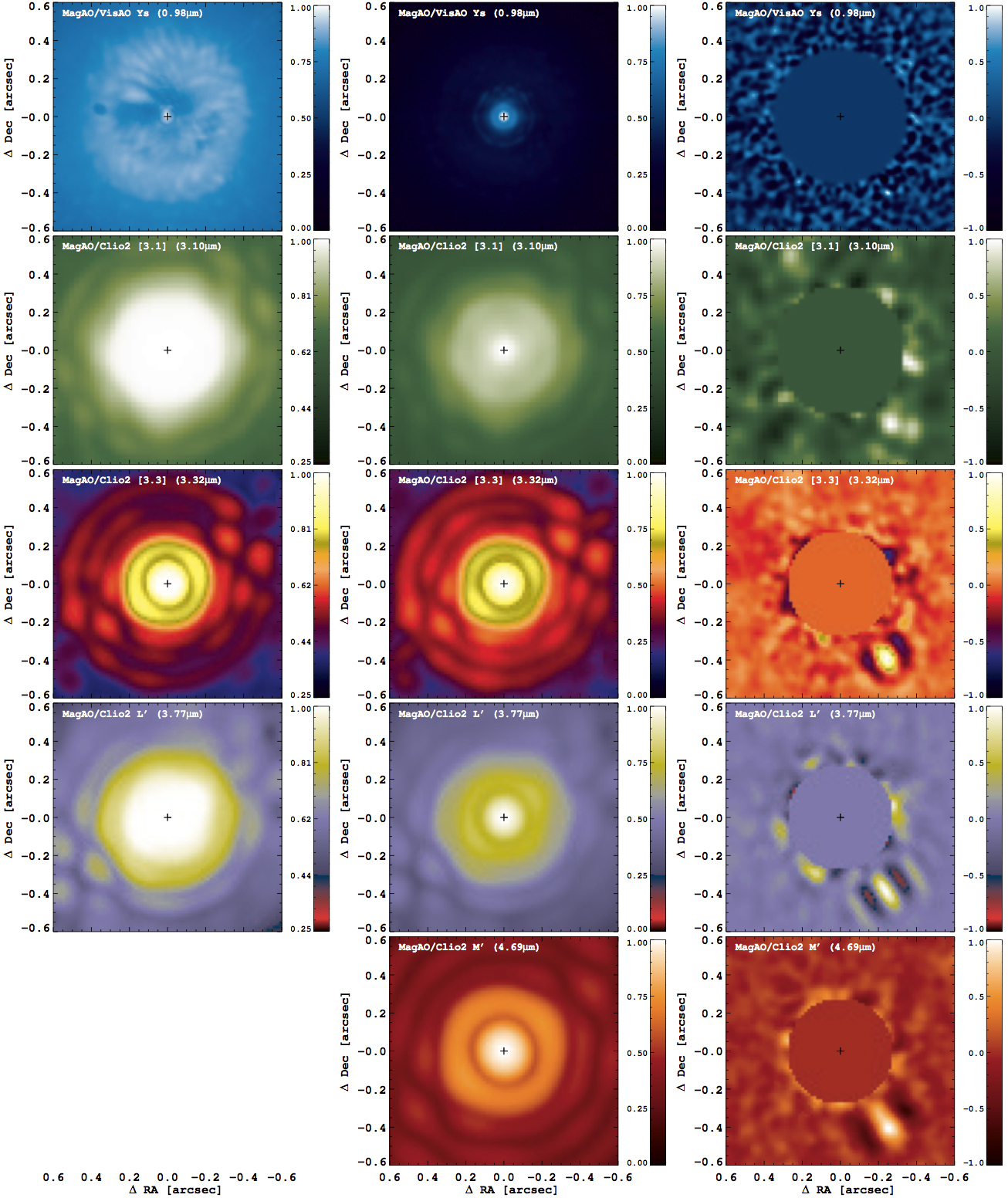
Here is the star’s SED and the planet’s SED:
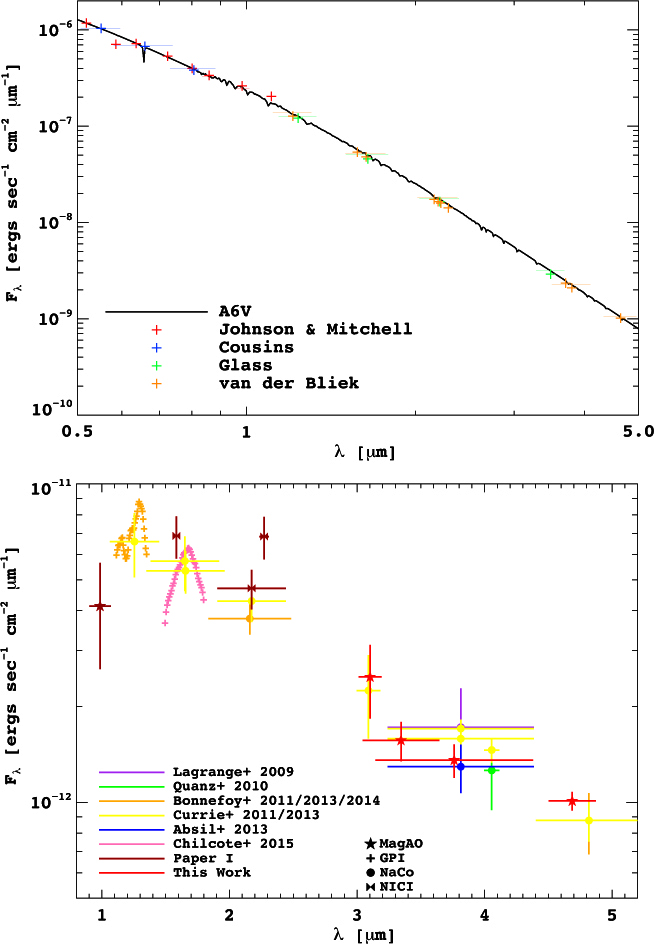
Bottom: SED of the planet (Figure 3 from the paper).
We measured the bolometric luminosity empirically by integrating the SED and extending with a best-fit blackbody:
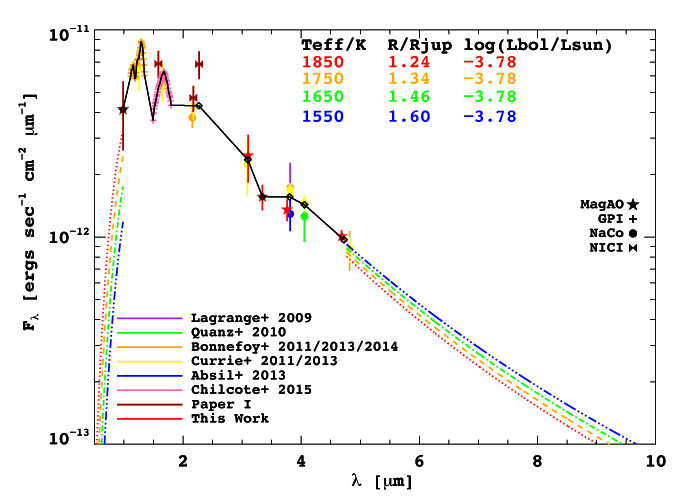
This is the first time the luminosity has been measured empirically, and it is in agreement with the luminosity from models but about 20% brighter than brown dwarfs of a similar temperature (the bolometric correction, abbreviated B.C. in the table):

Abstract: Young giant exoplanets are a unique laboratory for understanding cool, low-gravity atmospheres. A quintessential example is the massive extrasolar planet beta Pic b, which is 9 AU from and embedded in the debris disk of the young nearby A6V star beta Pictoris. We observed the system with first light of the Magellan Adaptive Optics (MagAO) system. In Paper I we presented the first CCD detection of this planet with MagAO+VisAO. Here we present four MagAO+Clio images of beta Pic b at 3.1 um, 3.3 um, L’, and M’, including the first observation in the fundamental CH_4 band. To remove systematic errors from the spectral energy distribution (SED), we re-calibrate the literature photometry and combine it with our own data, for a total of 22 independent measurements at 16 passbands from 0.99-4.8 um. Atmosphere models demonstrate the planet is cloudy but are degenerate in effective temperature and radius. The measured SED now covers > 80% of the planet’s energy, so we approach the bolometric luminosity empirically. We calculate the luminosity by extending the measured SED with a blackbody and integrating to find log(L_{bol}/L_{Sun}) = -3.78 +- 0.03. From our bolometric luminosity and an age of 23 +- 3 Myr, hot-start evolutionary tracks give a mass of 12.7 +- 0.3 M_{Jup}, radius of 1.45 +- 0.02 R_{Jup}, and T_{eff} of 1708 +- 23 K (model-dependent errors not included). Our empirically-determined luminosity is in agreement with values from atmospheric models (typically -3.8 dex), but brighter than values from the field-dwarf bolometric correction (typically -3.9 dex), illustrating the limitations in comparing young exoplanets to old brown dwarfs.
K. Morzinski et al., “Magellan Adaptive Optics first-light observations of the exoplanet beta Pic b. II. 3-5 micron direct imaging with MagAO+Clio, and the empirical bolometric luminosity of a self-luminous giant planet”
ApJ 815, 108, 2015 ; ArXiv Preprint ; ApJ
MagAO have just spent the week at AO4ELT 4 = Adaptive Optics for Extremely Large Telescopes, 4th edition. The conference was held at the UCLA conference center at Lake Arrowhead, a very nice resort where the CfAO Fall Retreat is usually held.
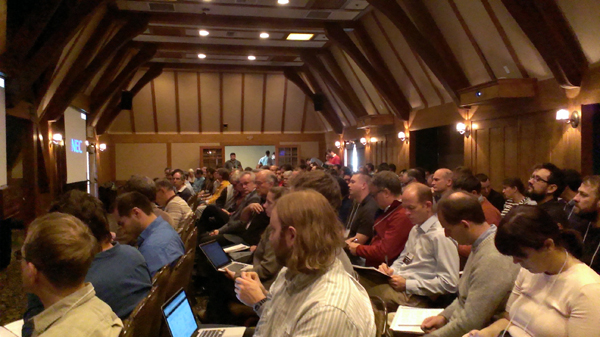
On Wednesday evening I went on a tour of Big Bear Solar Observatory organized by the conference. It was fun and interesting! The telescope is on a pier out in the lake, with a long narrow road going out to it:
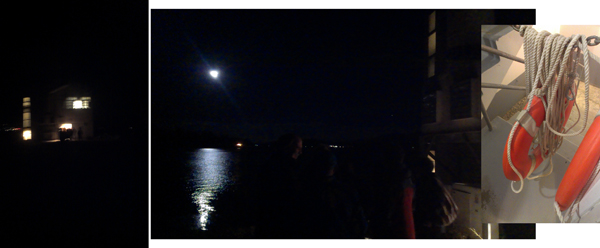
Visiting a solar telescope at night is like visiting a night-time-astronomy telescope during the day: You get a nice tour because the staff are able to give you their attention, and you get to go into the telescope dome and optics Coude room because they aren’t busy tracking the star(s) and collecting the photons.
We first saw the double-decker optics bench:
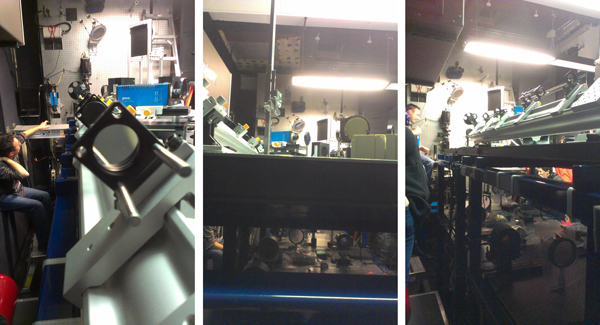
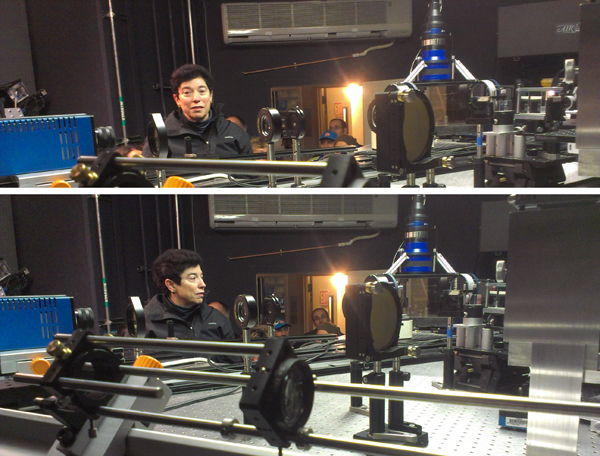
Then we saw the GUIs in the control room — looks fun!
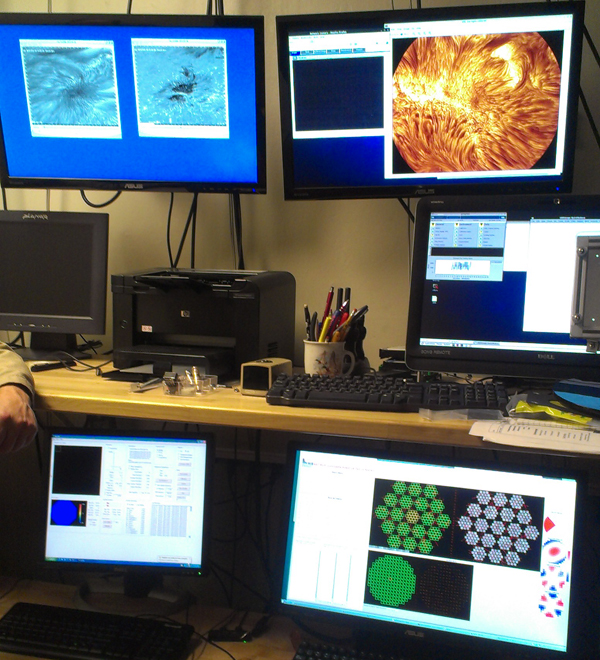
And some images of the final product:
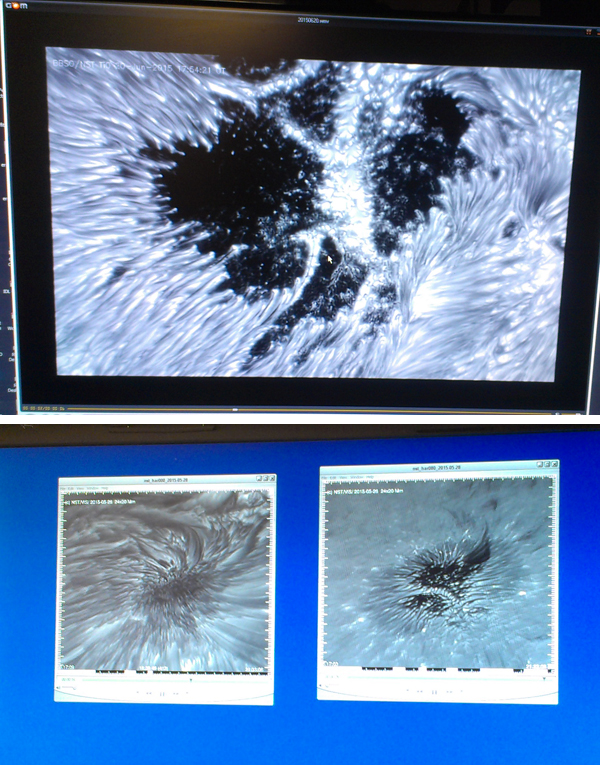
And finally, up to the top floor to see the telescope:
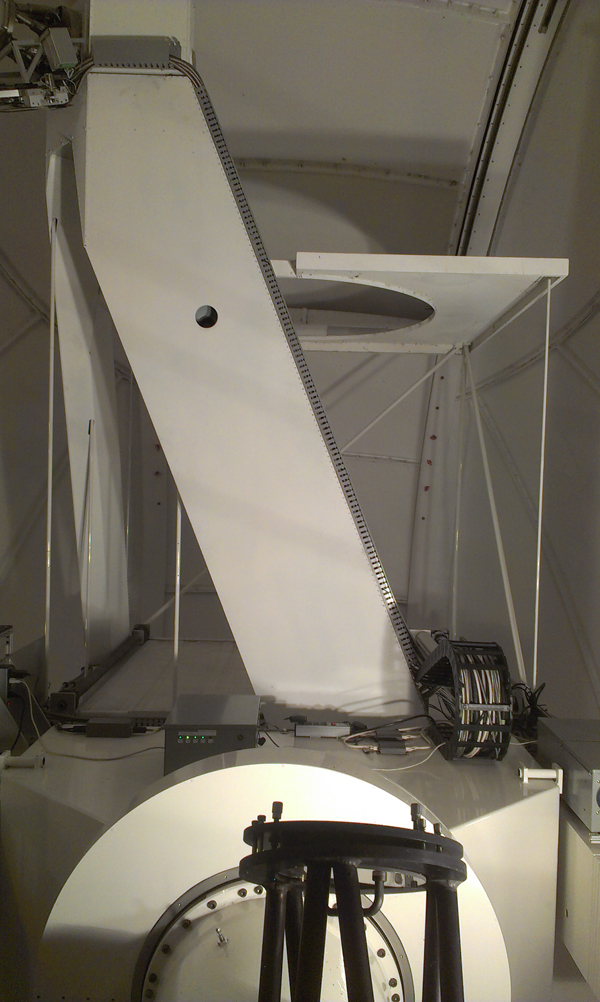
The secondary mirror is above the primary mirror, but off to the side. This is what is called an off-axis Gregorian, and I had never seen one before. The primary mirror is a segment of a parabola and was tested and polished to its final optical shape at the Steward Observatory Mirror Lab, and aluminized at Kitt Peak. The secondary mirror being off to the side means there are no “spiders” (or support struts that look like spider legs) in the beam to cause diffraction or scattered light that make it hard to image the high-contrast regions on the Sun. We also could use such a telescope design for imaging the faintest, coolest exoplanets.
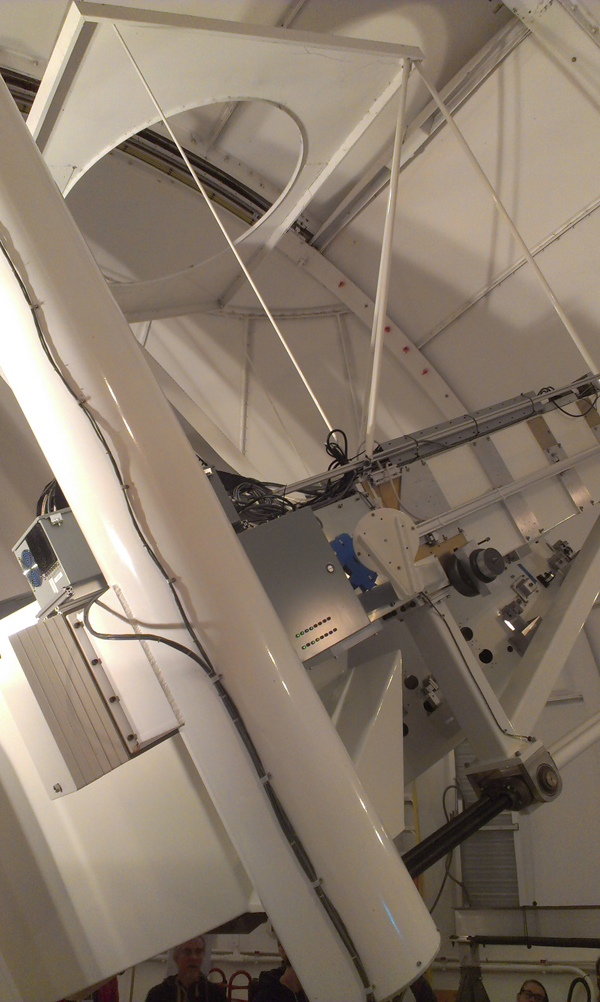
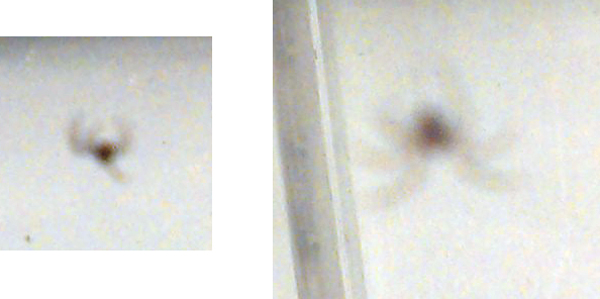
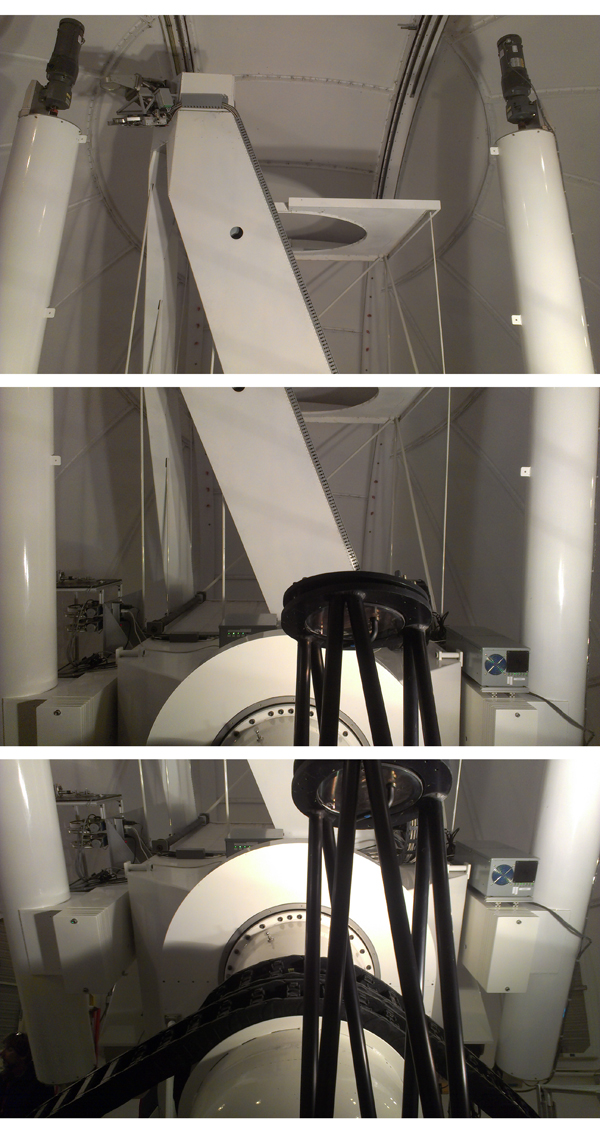
Thanks to the staff at Big Bear for the wonderful tour!
Now back to the conference. AO4ELT is a meeting where AO scientists and engineers come together to discuss cutting-edge problems and solutions in adaptive optics. This included science cases, wavefront control, deformable mirrors, detectors, lasers, etc. Jared gave 2 talks this week, one about his plan for an “extreme AO” (ExAO) version of MagAO called MagAO-X, and one about Olivier Guyon’s ExAO system at Subaru, SCExAO:
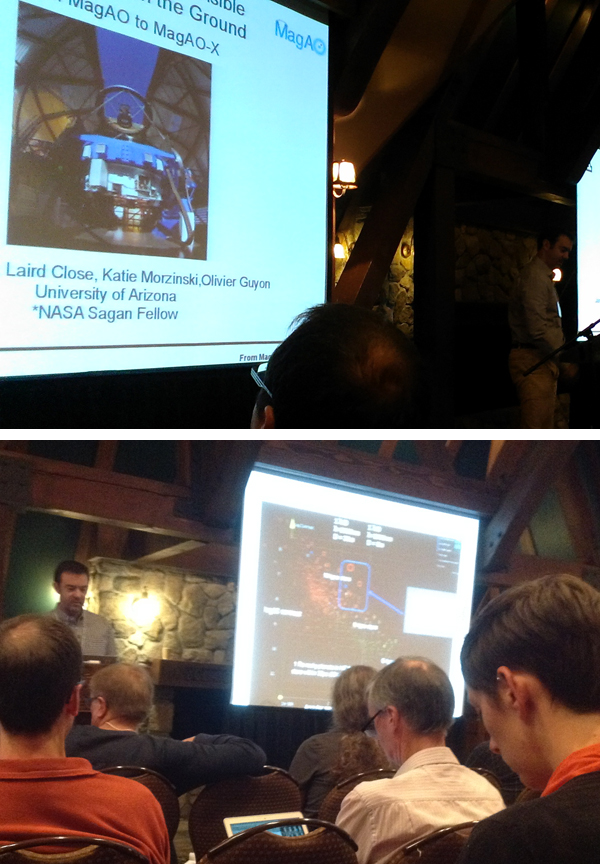
I had a poster about the science I am doing with MagAO and GPI to image Jupiter-like exoplanets and to measure their fundamental properties like temperature and luminosity:
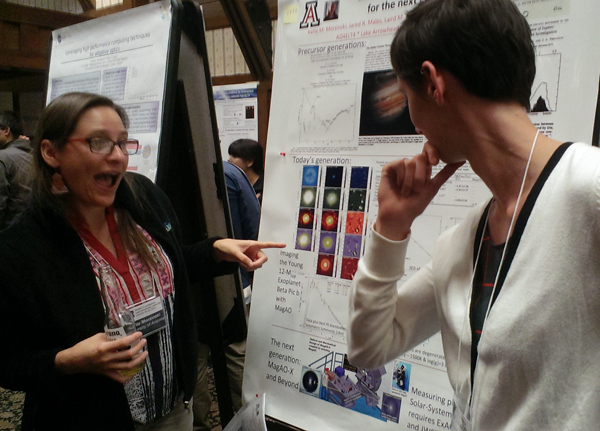
Runa had a poster about the E-ELT M4 wavefront corrector, which we quite enjoyed, as it was dense with cultural and AO references:
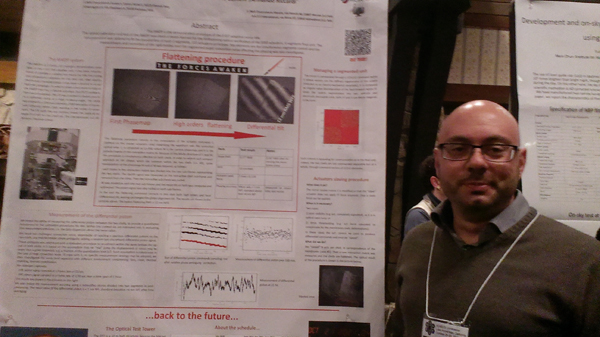
Laird talked about visible-light AO, for today’s and the next generation. His talk was 40 slides in 20 minutes and covered a lot of ground, and I was so taken that I forgot to get a picture of him giving the actual talk, so this will have to do:

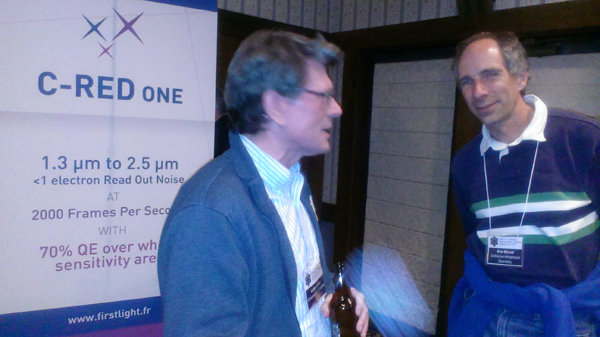
We enjoyed many formal and informal discussions at the meeting with our friends and colleagues about our new challenges in AO:
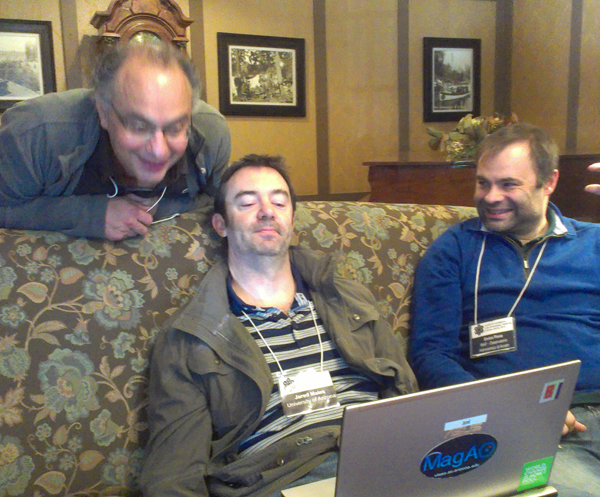
And finally, some wild life!
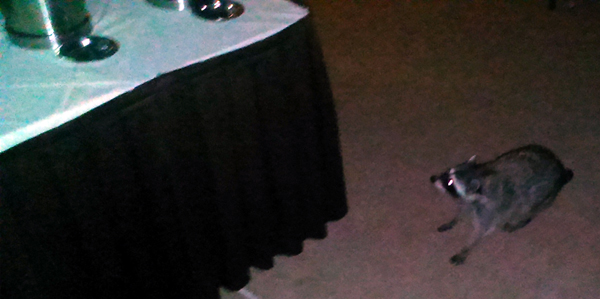
Hi MagAO fans… this planet discovery did not actually use MagAO (too bad!), but it includes MagAO team members Kate Follette and Katie Morzinski, and MagAO user/operator/blogger Kim Ward-Duong, and MagAO users Jenny Patience and Abhi Rajan, as well as involving our favorite technique of Extreme Exoplanet AO… so we thought you might be interested to hear about the first new planet discovered by the Gemini Planet Imager (GPI)!
Gemini is our neighboring telescope to the South on Cerro Pachon, and the Gemini Planet Imager has been mentioned on the MagAO blog before. The GPI Exoplanet Survey is a large program to look for new planets around young stars. It uses an extreme AO system with a MEMS deformable mirror to correct high-order turbulence, a specialized coronagraph to block out the light of the central star, and an integral field spectrograph to break the light into a rainbow of colors at each point in the image plane, in the 1-2 micron regime. See this blog post for more on how GPI works to see planets.
Today the Science article came out announcing the discovery of GPI’s first new planet, 51 Eri b, by Bruce Macintosh, James Graham, and the rest of the GPI/GPIES team. (ArXiv version.) Please see the press release for the full story! Here is a brief taste in pictures:
The 51 Eridani system consists of a ~20-Myr-old F-type star with a ~2000-AU-away distant pair of M dwarfs at ~6 AU from each other.
Here is a picture of the star in the sky, by Franck Marchis and Sarah Blunt — it is about 30 pc (almost 100 light years) away:
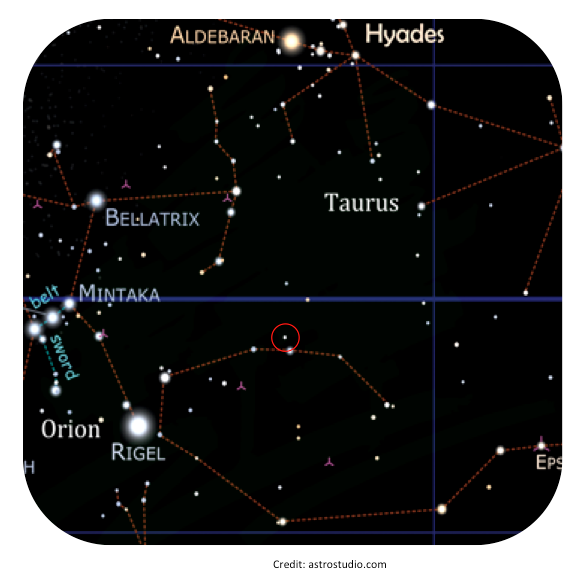
And a fly-by simulation of the system by Jenny Patience and James Cornelison:
Simulated fly-by of the 51 Eridani star and planet system from Franck Marchis on Vimeo.
Closer in to the star GPI found a planet at 13 AU — which would be a little bit outside the orbit of Saturn in our Solar System. Here is the discovery image, by Julien Rameau and Christian Marois:
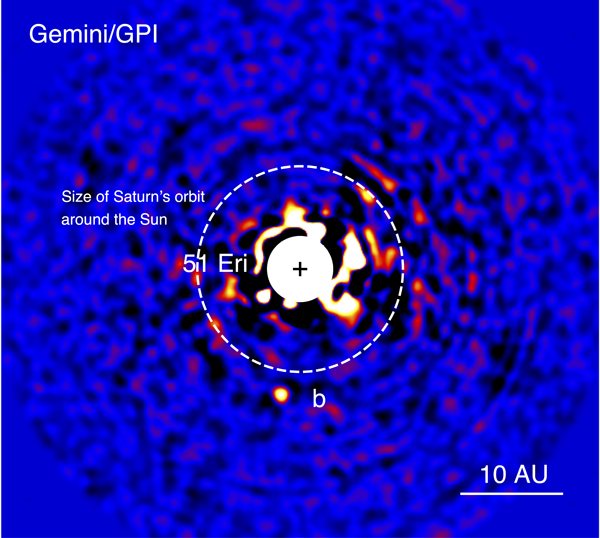
Here is an artist’s conception of the system, as seen from near the planet, by Danielle Futselaar and Franck Marchis:
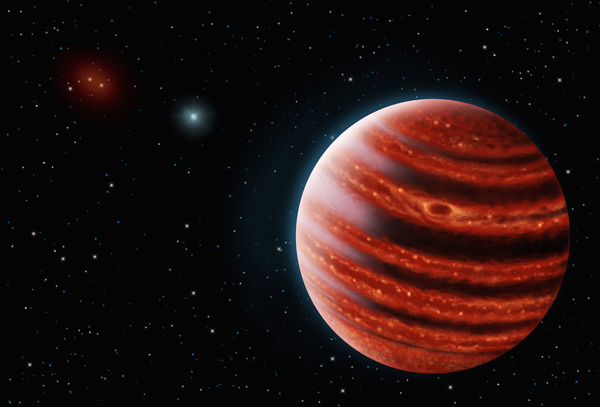
An integral part of GPI (haha…) is the Integral Field Spectrograph that takes a little spectrum of every point in the image. This way, we can discover the planet, as well as measure its properties like its temperature, at the same time. Check this movie out which shows the brightness of the planet at each wavelength, in two different ways of looking at it, by Robert De Rosa and Christian Marois: (It’s an animated gif… I hope it works on your browser/device.)
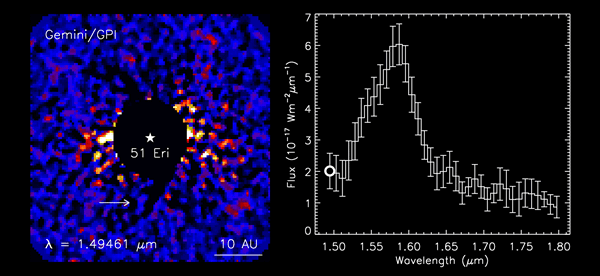
Well, as I said above, please see the paper (ArXiv version) and the press release for the full story. Thanks for reading. We’re so excited for GPI’s first planet, and we can’t wait to look at it with MagAO!